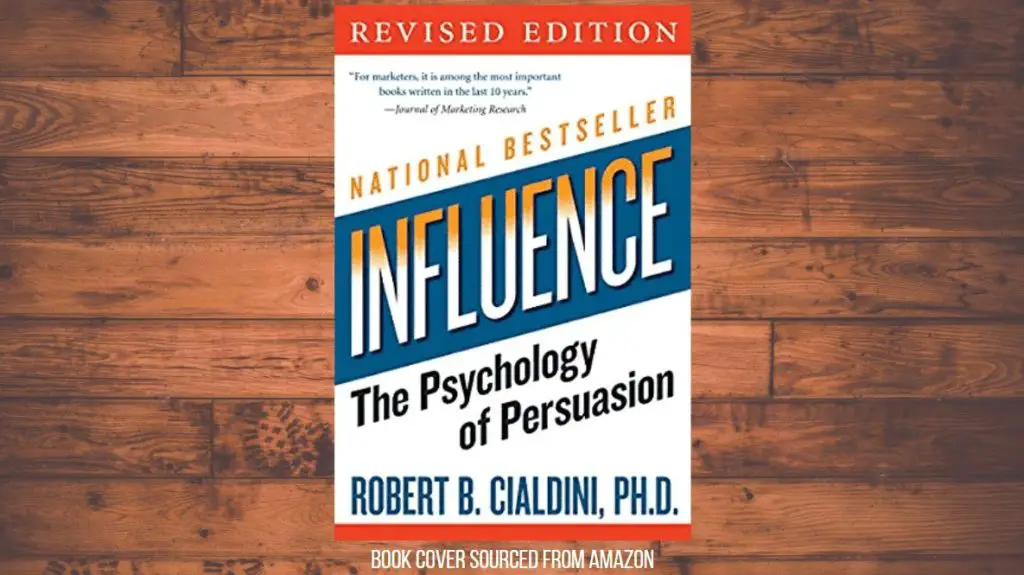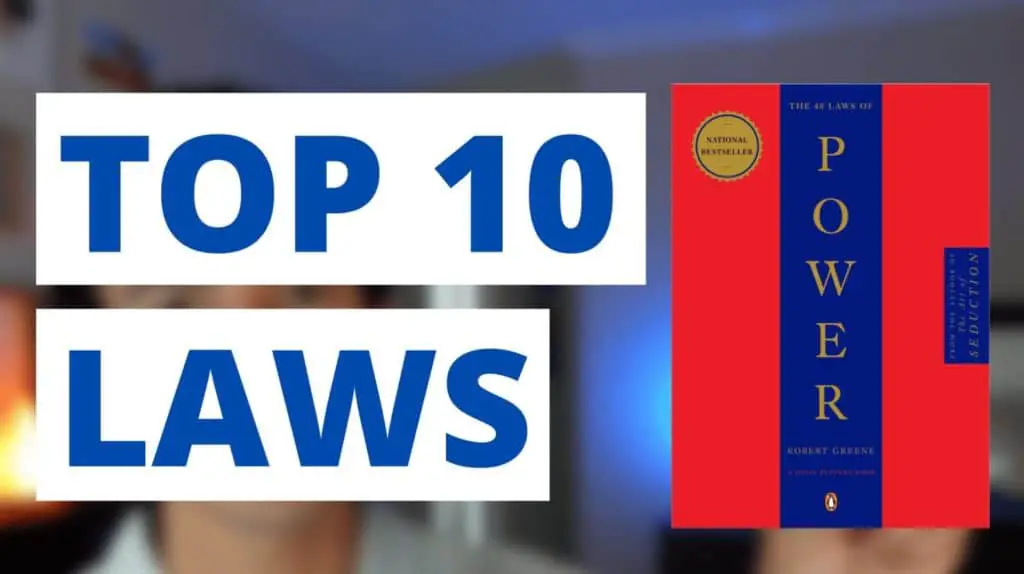This post may contain affiliate links, which means I’ll receive a commission if you purchase through my links, at no extra cost to you. Please read full disclosure for more information.
About Post Author
ABOUT
- Title: Influence
- Sub-title: The Psychology of Persuasion
- Author: Robert V. Cialdini
- About the author: Dr. Robert Cialdini received his Ph.D from UNC and post doctoral training at Columbia University. He has spent his entire career researching the science of influence. In addition to Influence, his new book Pre-Suasion is out now
- Published: 2009
- Link to book
HIGH-LEVEL SUMMARY
RECOMMENDATION
If you are interested in persuasion and how it works on a psychological level, this book is for you.
By reading this book, you’ll not only learn things that can help you become more persuasive, but you’ll learn about the tactics that could possibly be used against you by shady salespeople.
Since the “weapons of influence” have been put into 6 buckets, it’ll become easier for you to categorize which persuasion principle is being used against you.
TOP TAKEAWAYS
WHAT I LIKED
- All tactics fall under 6 principles
- The book shares eye-opening and interesting findings
- The research and examples shared make the principles easy to understand and remember
BENEFITS TO YOUR LIFE AND CAREER
- Become more persuasive
- Defend yourself against tactics of persuasion
- Understand psychological triggers and biases
14 ACTIONS YOU SHOULD TAKE
1. If you ask someone for a favor, you will be more successful if you provide a reason using “because” to trigger a more automatic compliance response.
2. If you work in retail sales, sell the most expensive item first. Then sell the lower-priced items. After purchasing the expensive item, the following items will seem much less expensive in comparison. A $95 sweater will seem cheap if someone just bought a $495 suit.
3. Use the reciprocation rule to your advantage and/or beware of when it is used on you. A small favor can create a “web of indebtedness” where you feel like you owe another person. Be cautious when accepting “free” or small gifts. There’s no such thing as a free lunch.
4. Use concession and reciprocation to get someone to comply. Suppose you want me to agree to a certain request. One way to increase your chances would be first to make a larger request of me, one that I will most likely turn down. Then, after I have refused, you would make the smaller request that you were really interested in all along. I should view your second request as a concession to me and should feel inclined to respond with a concession of my own.
5. If I can get you to make a commitment (that is, to take a stand, to go on record), I will have set the stage for your automatic and ill-considered consistency with that earlier commitment. Once a stand is taken, there is a natural tendency to behave in. Each of the strategies is intended to get us to take some action or make some statement that will trap us into later compliance through consistency pressures. For the salesperson, the strategy is to obtain a large purchase by starting with a small one. The tactic of starting with a little request in order to gain eventual compliance with related larger requests has a name: the foot-in-the-door technique.
6. What the Freedman and Fraser findings tell us, then, is to be very careful about agreeing to trivial requests. It scares me enough that I am rarely willing to sign a petition anymore, even for a position I support.
7. Other compliance professionals also know about the committing power of written statements. Members of the staff are asked to set individual sales goals and commit themselves to those goals by personally recording them on paper: There is something magical about writing things down. So set a goal and write it down. Whenever one takes a stand that is visible to others, there arises a drive to maintain that stand in order to look like a consistent person.
8. The Effort Extra. Yet another reason that written commitments are so effective is that they require more work than verbal ones. And the evidence is clear that the more effort that goes into a commitment, the greater is its ability to influence the attitudes of the person who made
9. Be conscious of when social proof could be at work. Are you making decisions based on the crowd? How do you even know the crowd is correct when they are all individually wondering what the crowd thinks.
10. If you want to be more influential get people to know and like you. This is consistent with liking, one of the 6 elements of persuasion. When you find yourself being persuaded because you like someone, make a conscious effort to concentrate exclusively on the merits of the situation.
11. Don’t be the bearer of bad news. There is a natural human tendency to dislike a person who brings us unpleasant information, even when that person did not cause the bad news.
12. Use the authority principle to your advantage by boosting your appearance of authority. The book mentions titles, clothes, and material goods. Also, be aware of the authority principle being used against you. Are you complying and being submissive due to someone’s appearance of authority?
13. Beware of salespeople and advertisements using scarcity to force you into a sale. Things such as “limited time left” or “limited amount left.”
14. Beware of feeling inclined to take action because of the fear of loss. Realize that humans want to avoid loss more than they seek an equivalent gain. When we watch something we want become less available, a physical agitation sets in.
RESOURCES
Persuasion can be found on Amazon at this link here if you are interested in reading.



